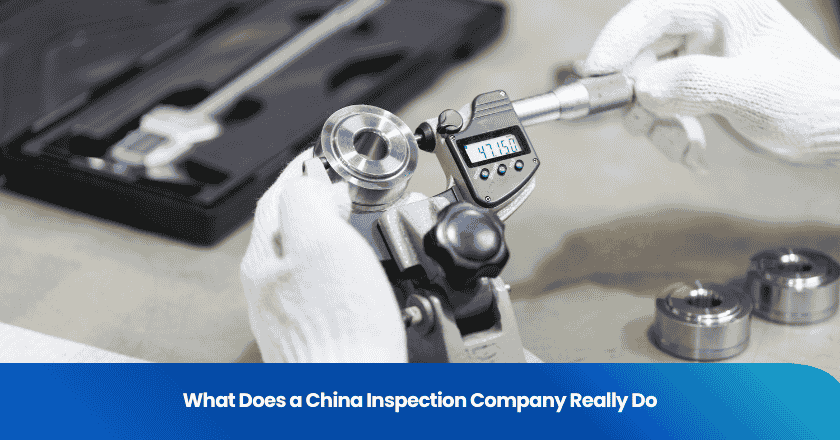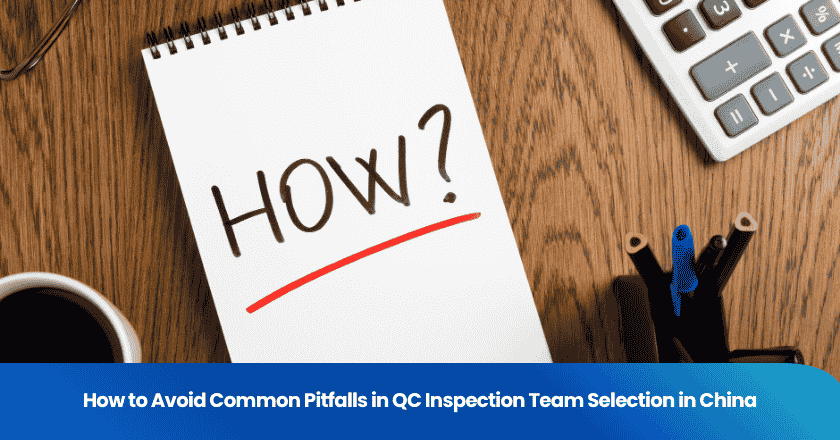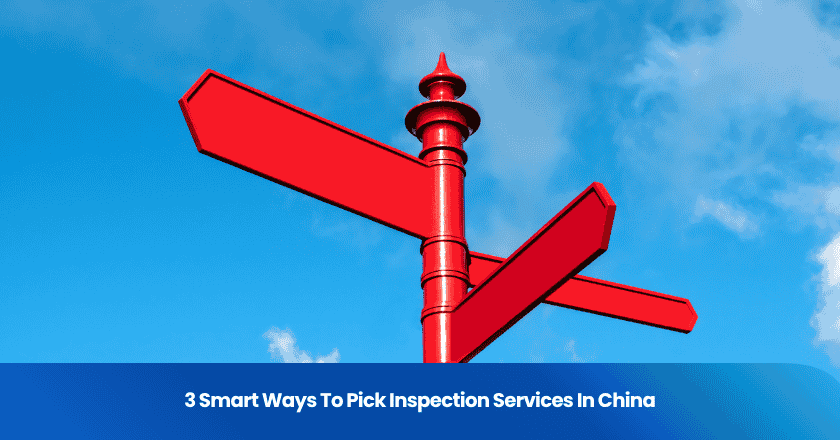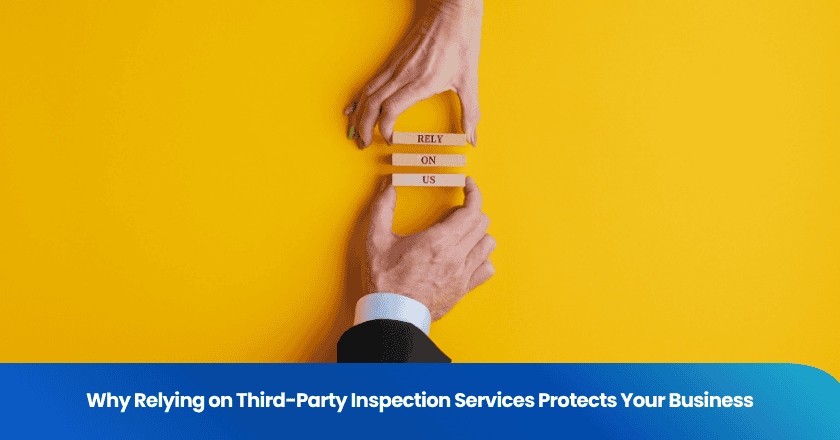
Imagine you source products from China without verifying their quality. You may face costly problems like electronics defects, apparel issues, or even faulty automotive parts. A China inspection company helps you avoid these risks. It acts as your eyes on the ground, ensuring each inspection protects your business from losses and reputation damage.
- Electronics defects can lead to recalls and unhappy customers.
- Apparel with color variation or loose stitching wastes resources and hurts your brand.
- Faulty automotive fasteners may cause safety failures and legal trouble.
Key Takeaways
- A China inspection company helps you avoid costly mistakes by checking product quality before shipment.
- Regular inspections catch defects early, reducing waste and improving customer satisfaction.
- Using third-party inspections ensures unbiased results and compliance with international standards.
- Pre-shipment inspections verify that products meet specifications, protecting your brand reputation.
- Choosing the right inspection partner is crucial for maintaining quality and ensuring successful international trade.
China Inspection Company: Definition and Purpose
What is a China inspection company
A China inspection company serves as a third-party organization that evaluates products before they leave the factory. You rely on these experts to measure, inspect, test, or weigh product characteristics. They compare results against your specified requirements to ensure compliance. This process follows international standards such as ISO 2859, which guides quality inspection practices. When you work with a China inspection company, you gain confidence that your goods meet the standards needed for export and distribution.
You benefit from a China inspection company's expertise in identifying issues that could affect your shipment. Their team uses specialized tools and methods to check for defects, inconsistencies, or non-compliance. This step is essential for maintaining product quality and protecting your business reputation.
Main purpose in the supply chain
A China inspection company plays a critical role in the supply chain. You use their services to reduce risks and improve outcomes. Their main purposes include:
1. Reduced Defects and Rework: You catch quality issues early, which minimizes defects and costly rework.
2. Enhanced Product Quality: Your products meet quality standards, reducing customer dissatisfaction and recalls.
3. Improved Supply Chain Management: You gain insights into manufacturer capabilities, helping you mitigate risks.
You must also comply with legal and regulatory requirements when exporting goods from China. These include:
- Ensuring compliance with national safety and quality standards.
- Obtaining the China Compulsory Certification (CCC) mark for certain products.
- Maintaining audit-grade records for each batch.
- Ensuring traceability back to production.
- Developing recall procedures.
- Preparing to respond to regulatory requests for inspection.
The CCC mark is essential for many products. You need to apply to authorized certification bodies, which can be a lengthy and costly process. You must keep detailed records and be ready for regulatory audits. A China inspection company helps you navigate these requirements, ensuring your shipments meet all necessary standards.
Roles in Product and Quality Inspection in China
Product inspection in China
You rely on product inspection in China to verify that your goods meet your specifications before shipment. This process helps you avoid costly mistakes and ensures that your products reach customers in perfect condition. Inspection teams use a range of methods to check for defects, inconsistencies, and compliance with international standards. You benefit from several types of product inspection in China, each designed to catch issues at different stages of production.
| Type of Inspection | Description |
|---|---|
| Initial Production Check (IPC) | Conducted at the beginning of production to inspect the first batch of products for compliance. |
| During Production Check (DUPRO) | Monitors product quality throughout the production process. |
| Pre-Shipment Inspection (PSI) | Conducted after production to ensure products meet quality standards before shipment. |
| Container Loading Check (CLC) | Verifies that goods are loaded correctly and meet specified requirements before shipment. |
You use product inspection in China to confirm that your products match your order and industry regulations. Regular inspection helps you maintain supplier accountability and prevents financial losses from defective goods. Inspection teams measure, test, and weigh product characteristics, giving you confidence in every shipment.
Tip: Schedule product inspection in China at multiple stages to catch problems early and reduce the risk of receiving substandard goods.
Factory audits and compliance
Factory audits play a vital role in quality control in China. You use audits to assess manufacturing processes, working conditions, and compliance with international standards. Auditors visit factories to review documentation, observe production, and interview workers. This process helps you identify risks and ensure ethical practices.
| Compliance Issue | Description |
|---|---|
| Forced or underage labour | Ensure that bonded or underage labour does not participate in the labour force. |
| Collective bargaining | Ensure workers can negotiate terms collectively. |
| Health and safety | Provide a safe and secure working environment for workers. |
| Working hours and wages | Adhere to prescribed limits for wages and working hours. |
| Harassment and Discrimination | Prevent any form of harassment or discrimination in the workplace. |
| Environmental impact | Minimize the environmental impact of manufacturing processes. |
| Freedom of association | Avoid interfering with workers' rights to form unions or committees. |
You use factory audits to verify that suppliers follow labor laws, safety standards, and environmental regulations. Audits help you avoid legal trouble and protect your reputation. You also ensure that your products come from factories that treat workers fairly and operate responsibly.
Note: Factory audits in China often reveal issues such as lack of safety equipment, poor emergency response plans, and incomplete attendance records. Addressing these problems helps you maintain high standards for quality control in China.
Quality control in China
Quality control in China covers every step from sourcing materials to shipping finished products. You implement quality control methods to ensure that your products meet your requirements and industry standards. Inspection teams use clear specifications, regular audits, and ongoing communication with suppliers to maintain consistency.
You use quality control in China to detect defects, inconsistencies, or discrepancies before shipment. Inspection ensures that you receive exactly what you ordered. Regular quality inspection in China helps you hold suppliers accountable and maintain high standards. You integrate inspection with other supply chain partners by conducting pre-production checks, monitoring production, and supervising loading. These steps safeguard product quality and safety, protecting your business from losses and reputation damage.
Reminder: Effective quality control in China requires clear communication, detailed documentation, and regular inspection at every stage of production.
Pre-Shipment Inspection and Process
Pre-shipment inspection steps
You depend on pre-shipment inspection in China to verify that your product meets your quality standards before leaving the factory. This inspection process follows a series of steps designed to catch defects and ensure compliance with your requirements. Inspection teams arrive at the factory and pull samples from finished goods. They conduct special testing to check for product functionality and durability. Packaging and label verification ensures that your product matches your specifications and meets international standards.
Inspection professionals perform visual checks to spot defects or inconsistencies. Functional testing confirms that your product works as intended. Teams check physical requirements, such as dimensions and weight, to guarantee accuracy. Barcode verification and carton drop testing help confirm that your product will withstand shipping and handling. After completing these steps, inspectors compile and dispatch a detailed report to you.
Tip: You should never skip pre-shipment inspection in China. Skipping this step can lead to higher costs from returns and damage to your brand reputation.
Reporting and follow-up actions
Inspection companies in China use advanced reporting methods to keep you informed. You receive real-time updates if inspectors find any quality issues during the inspection. Detailed reports guide your supplier in making improvements and maintaining consistent product quality. Clear documentation outlines inspection criteria and expectations, helping you understand every aspect of the process.
Inspection reports from China typically arrive within 6 to 24 hours after the inspection. You use these reports to make decisions about accepting, rejecting, or requesting rework on your product. Inspection companies recommend follow-up actions such as root-cause analysis, remediation plans, and enhanced policies. You may adopt specific audit tools, conduct pre-issuance reviews, or carry out post-issuance reviews to address risks.
Inspection teams support your decision-making by providing defect sorting services, detailed photo and video reports, and arrangements for product replacements or returns. Independent inspections offer objective results, ensuring your product meets buyer requirements and quality standards.
Note: Common challenges during pre-shipment inspection in China include relying solely on supplier quality control, vague inspection checklists, and conducting inspections before packing is finalized. You avoid these pitfalls by working with experienced inspection teams and maintaining clear communication.
Impact on Supply Chain and Business Outcomes
Ensuring product quality
You strengthen your supply chain when you use inspection in China. Inspection teams perform initial production check, during production inspection, and pre-shipment inspection to maintain product quality. These steps help you catch defects early and ensure your product meets quality standards. Regular inspection in China supports your business by improving efficiency and reducing waste. You build trust with customers when you deliver consistent quality.
| Inspection Type | Contribution to Quality |
|---|---|
| Initial production check | Identifies potential defects before manufacturing begins. |
| During production inspection | Monitors quality throughout the production process. |
| Pre-shipment inspection | Ensures products meet quality standards before shipping. |
You benefit from quality inspection services that verify your product against agreed specifications. Inspection in China helps you maintain strong supplier relationships and ethical sourcing practices. You achieve better product quality and competitiveness in international markets when you prioritize inspection and quality control services.
- Regular inspection in China helps you meet desired quality levels.
- Early defect identification reduces waste and improves efficiency.
- Enhanced customer satisfaction comes from consistent product quality.
Reducing risks in international trade
Inspection in China reduces risks for your business in international trade. You avoid costly delays and unexpected expenses by using quality inspection services. Inspection teams check for defects, verify quantity, and assess damage during transit. You ensure compliance with regulatory requirements through thorough inspection and documentation.
| Benefit | Description |
|---|---|
| Quality control | Verify the goods match the agreed specifications and sample quality. |
| Quantity check | Ensure the shipment contains the correct number of units. |
| Damage assessment | Look for signs of damage caused during transit and document them with photos and written reports. |
| Compliance verification | Double-check that all labels, certifications, and documentation align with regulatory requirements. |
You improve your supply chain reliability by using inspection in China. Inspection reduces crash risk and increases market stability. You gain investor confidence and enhance your business reputation through transparent quality control services. Companies that use inspection and initial production check achieve long-term benefits, including better product quality and adaptability to new trends like AI integration and sustainability audits.
Note: Inspection in China benefits not only your business but also the entire industry by fostering transparency and higher quality standards.
You gain peace of mind when you invest in a quality inspection service for your supply chain in China. A robust quality inspection program, including final random inspection and during production check, helps you deliver consistent results and maintain your reputation. Quality assurance protects your business from costly mistakes and supports successful international trade. When you select an inspection partner, consider service range, industry specialization, certifications, reporting quality, reputation, communication, and pricing.
Quality assurance is not optional. You secure your business future when you prioritize inspection and choose the right partner.
FAQ
What is an initial production inspection?
You use initial production inspection to check the first batch of goods at the start of manufacturing. This step helps you confirm that materials and processes meet your requirements before full production begins.
Why should you hire a third-party inspection agency?
You hire a third-party inspection agency to get unbiased results. These agencies provide independent assessments, helping you avoid conflicts of interest and ensuring your products meet international standards.
How does a third-party inspection agency report findings?
You receive detailed reports from a third-party inspection agency. These reports include photos, test results, and recommendations. You use this information to make decisions about accepting, rejecting, or requesting changes to your shipment.
When is initial production inspection most useful?
You find initial production inspection most useful when working with new suppliers or launching new products. This inspection helps you catch problems early and avoid costly mistakes later in the supply chain.
What should you expect during a factory visit?
You observe inspectors reviewing production lines, checking documentation, and interviewing staff. You see them verify compliance with safety, labor, and environmental standards. You receive a summary of findings after the visit.
Grow your business with TradeAider Service
Click the button below to directly enter the TradeAider Service System. The simple steps from booking and payment to receiving reports are easy to operate.




